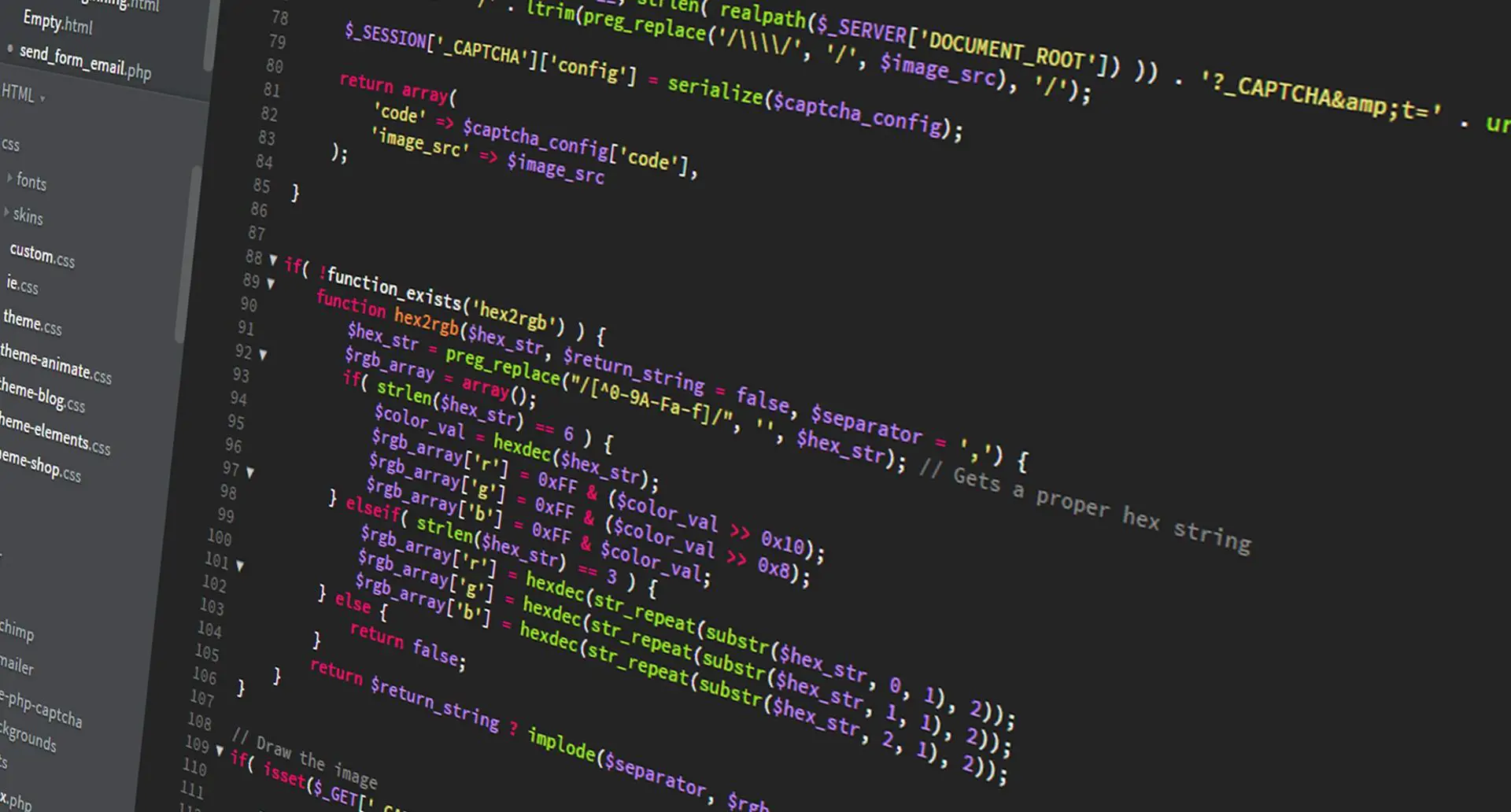Machine learning deployment is a crucial step in bringing the benefits of data science to real-world applications. With the increasing demand for machine learning deployment, various tools and platforms have emerged to help data scientists and developers deploy their models quickly and efficiently.
In this article, we will explore the top machine learning deployment tools and platforms that can help organizations streamline their deployment process, improve model performance, and achieve their business goals. From cloud-based services to open-source frameworks, these tools offer a range of features and functionalities to cater to different deployment needs. Let’s dive into the world of machine learning deployment and discover the best tools available today.
Understanding machine learning deployment architecture
Machine learning model deployment architecture refers to the design pattern or approach used to deploy a machine learning model. In every case, a deployed model is associated with an application that fulfills a particular use case. For instance, a simple model deployment may involve a web page that takes input from the user, sends it to the model using an API, and returns the result to the user.

Here, the application would be the web page. There are several deployment architectures available, including:
- Embedded architecture, where the model is deployed directly onto the device and operates locally.
- Dedicated Model API architecture, where a separate API is created specifically for the model and serves as an interface for model interaction.
- Model published as data architecture, where the model is deployed as a file or a set of files and accessed through a data store.
- Offline predictions architecture, where the model is deployed to run on a batch of data instead of real-time predictions.
How to deploy a machine learning model in production?
Many data science initiatives involve the deployment of machine learning models in on-demand prediction mode or batch prediction mode, while some more modern applications leverage embedded models on edge and mobile devices. Each of these deployment strategies has its own advantages. In the case of batch prediction mode, optimizations are implemented to minimize the computational cost of the model.
Additionally, there are fewer dependencies on external data sources and cloud services, and the local processing power is often adequate for computing algorithmically complex models. Moreover, it is relatively simple to debug an offline model when failures occur, or to tune hyperparameters since it runs on powerful servers. The deployment of machine learning models in diverse settings is an essential aspect of machine learning deployment.

Alternatively, web services can offer more cost-effective and almost real-time predictions, especially when the model runs on a cluster or cloud service with readily available CPU power. The model’s accessibility can also be enhanced by making it easily available to other applications through API calls. On the other hand, one of the primary advantages of embedded machine learning is the ability to tailor it to the specifications of a specific device.
Deploying the model to a device ensures that its runtime environment remains secure from external tampering. However, one potential disadvantage is that the device must have sufficient computing power and storage space to accommodate the model’s requirements. Machine learning deployment necessitates a comprehensive evaluation of these factors to determine the most suitable approach for a given use case.
What are the methods of machine learning model deployment?
Machine learning model deployment involves making the trained model available for use in a production environment. There are several methods of machine learning model deployment, each with its own advantages and limitations.
- Embedded deployment: In this method, the model is deployed directly onto the device and operates locally. This approach is best suited for edge computing or IoT devices where connectivity is limited or unreliable.
- Web API deployment: In this method, the model is deployed as a web service and accessed through an API. This approach offers greater flexibility in terms of model access and enables real-time predictions.
- Cloud-based deployment: In this method, the model is deployed on a cloud platform and accessed through the internet. This approach is highly scalable and cost-effective, as it allows for dynamic allocation of computing resources.
- Container deployment: In this method, the model is packaged as a container and deployed on a container orchestration platform like Kubernetes. This approach enables seamless integration with existing infrastructure and offers greater control over resource allocation.
- Offline deployment: In this method, the model is deployed to run on a batch of data instead of real-time predictions. This approach is best suited for applications that require periodic updates and can tolerate some delay in results.

Each of these methods offers different trade-offs in terms of performance, scalability, and cost-effectiveness. Therefore, it is essential to choose the appropriate deployment method based on the specific requirements of the application.
Top 9 machine learning deployment tools
It’s important to note that different machine learning deployment needs require different tools. Therefore, this list is not arranged from best to worst. Instead, it is a compilation of the top 9 machine learning deployment tools that cater to different deployment needs. Let’s dive in and get to know each of these tools and what they offer.
Kubeflow
Kubeflow is a robust machine learning deployment toolkit designed specifically for Kubernetes that focuses on the maintenance of machine learning systems. Its primary functions include packaging and organizing docker containers to support the maintenance of an entire machine learning system.
By simplifying the development and deployment of machine learning workflows, Kubeflow ensures that models are traceable while offering a comprehensive suite of powerful machine learning tools and architectural frameworks to perform various machine learning tasks efficiently. The platform also includes a multifunctional UI dashboard, making it easy to manage and track experiments, tasks, and deployment runs.
Furthermore, the Notebook feature enables users to interact with the machine learning system using the specified platform development kit. Components and pipelines are modular and can be reused to provide rapid solutions. Initially, Google launched this platform to serve TensorFlow tasks through Kubernetes, but it has since grown to become a multi-cloud, multi-architecture framework that executes the entire machine learning pipeline.

Gradio
Gradio is an open-source, flexible user interface (UI) that is compatible with both Tensorflow and Pytorch models. It is freely available, making it accessible to anyone who wishes to use it. By leveraging the open-source Gradio Python library, developers can quickly and easily create user-friendly, adaptable UI components for their machine learning models, APIs, or any other functions using just a few lines of code.
Gradio offers various UI elements that can be customized and tailored to suit the requirements of machine learning models. For instance, it provides a simple drag-and-drop image classification that is highly user-optimized. Setting up Gradio is fast and straightforward, with direct installation available via pip.
Additionally, Gradio requires only a few lines of code to provide an interface. The quickest way for machine learning deployment in front of an audience is likely through Gradio’s creation of shareable links. Unlike other libraries, Gradio can be used anywhere, whether it is a standalone Python script or a Jupyter/Colab notebook.
Adversarial machine learning 101: A new cybersecurity frontier
Cortex
Cortex is a versatile open-source multi-framework tool that can serve multiple purposes such as model serving and monitoring. It provides complete control over model management operations by catering to different machine learning workflows.
It can be utilized as an alternative to the SageMaker tool for serving models and as a model deployment platform built on top of AWS services like Elastic Kubernetes Service (EKS), Lambda, or Fargate. Cortex integrates with open-source projects such as Docker, Kubernetes, TensorFlow Serving, and TorchServe, and can seamlessly collaborate with any machine learning libraries or tools.
With scalability of endpoints, Cortex offers an efficient solution to manage loads. It enables the deployment of multiple models in a single API endpoint and provides a means to update production endpoints without stopping the server. Cortex also offers model monitoring capabilities, enabling supervision of endpoint performance and prediction data.

Seldon.io
Seldon core, an open-source framework available through Seldon.io, accelerates the deployment of machine learning models and experiments while simplifying the process. This framework supports and serves models created using any open-source machine learning framework. With Kubernetes, machine learning models are deployed, and the framework can leverage cutting-edge Kubernetes features, including changing resource definitions to manage model graphs, scaling with Kubernetes as needed.
Seldon provides the ability to connect projects to continuous integration and deployment (CI/CD) solutions to facilitate growth and model deployment updates. It also includes a system for alerting users to issues that arise while keeping track of models in production. The machine learning deployment tool supports both on-premises and cloud deployment options, and models can be defined to interpret specific predictions.
Exploring the exciting possibilities of embedded machine learning for consumers
BentoML
BentoML is a machine learning deployment tool that simplifies the creation of machine learning services by providing a standardized Python-based architecture for installing and maintaining production-grade APIs. This tool enables users to package trained models for both online and offline model serving using any machine learning framework with the support of this architecture.
BentoML’s high-performance model server supports adaptive micro-batching and can independently scale model inference workers from business logic. The centralized UI dashboard facilitates organizing models and tracking deployment procedures.
BentoML’s modular design allows for reuse with existing GitOps workflows, and automatic Docker image generation streamlines deployment to production as a straightforward and versioned procedure.

SageMaker
SageMaker is a fully supervised service that comprises modules that can be used independently or in conjunction with one another to construct, train, and deploy machine learning models. It offers developers and data scientists a fast and efficient way to build, train, and deploy machine learning models at any scale into a production-ready hosted environment.
SageMaker includes an inbuilt Jupyter writing notebook instance that provides quick and easy access to data sources for research and analysis, eliminating the need for managing any servers. Additionally, this machine learning deployment tool offers popular machine learning methods optimized for use with large amounts of data in a distributed setting.
Torchserve
Torchserve is a PyTorch model serving framework that simplifies the deployment of trained PyTorch models at scale without requiring the writing of new code for model deployment. AWS created Torchserve as a component of the PyTorch project, making it easier to set up for those who use the PyTorch environment to build models.
Torchserve enables low-latency, lightweight serving, delivering high performance and scalability to the deployed models. With valuable features like multi-model serving, model versioning for A/B testing, monitoring metrics, and RESTful endpoints for application interaction, Torchserve is a powerful tool. For certain machine learning tasks like object identification or text classification, Torchserve provides built-in libraries, potentially reducing the time and effort required for coding.

Kubernetes
Kubernetes is an open-source platform used for managing containerized tasks and operations. Kubernetes deployment is a resource object that offers declarative updates to applications. Deployments enable specifying the application’s lifecycle, such as which images to use and how often they should be updated.
Kubernetes helps to increase the stability and consistency of applications, and utilizing its vast ecosystem can enhance productivity and efficiency. Furthermore, Kubernetes may be a more cost-effective machine learning deployment tool when compared to its competitors.
Rethinking finance through the potential of machine learning in asset pricing
TensorFlow Serving
TensorFlow Serving is a reliable and high-performance solution for serving machine learning models by enabling the use of trained models as endpoints for deployment. It enables the development of REST API endpoints for the trained models, allowing modern machine learning algorithms to be easily deployed while maintaining the same server architecture and corresponding endpoints. TensorFlow Serving is robust enough to handle a wide range of models and data types, including TensorFlow models. Many prestigious companies, including Google, utilize TensorFlow Serving, making it an excellent central model base for serving models. The serving architecture’s effectiveness enables multiple users to access the model simultaneously, and any congestion caused by a high volume of requests can be managed using the load balancer.

Conclusion
Machine learning deployment has become an essential aspect of the data science workflow, enabling organizations to translate their machine learning models into practical applications. As we have seen, there are several methods of machine learning model deployment, each with its own strengths and limitations. The top 9 machine learning deployment tools we have explored in this article offer a diverse range of features and functionalities, catering to different deployment needs.
From cloud-based platforms to container orchestration tools, these tools have revolutionized the way we deploy machine learning models in production environments. As the field of machine learning continues to evolve, it is vital to stay up-to-date with the latest tools and technologies to ensure that we can efficiently and effectively deploy our models. With these top 10 machine learning deployment tools at your disposal, you can be sure that you have the right tools to take your machine learning projects to the next level.
- SEO Powered Content & PR Distribution. Get Amplified Today.
- PlatoAiStream. Web3 Data Intelligence. Knowledge Amplified. Access Here.
- Minting the Future w Adryenn Ashley. Access Here.
- Source: https://dataconomy.com/2023/04/28/top-9-machine-learning-deployment-tools/



